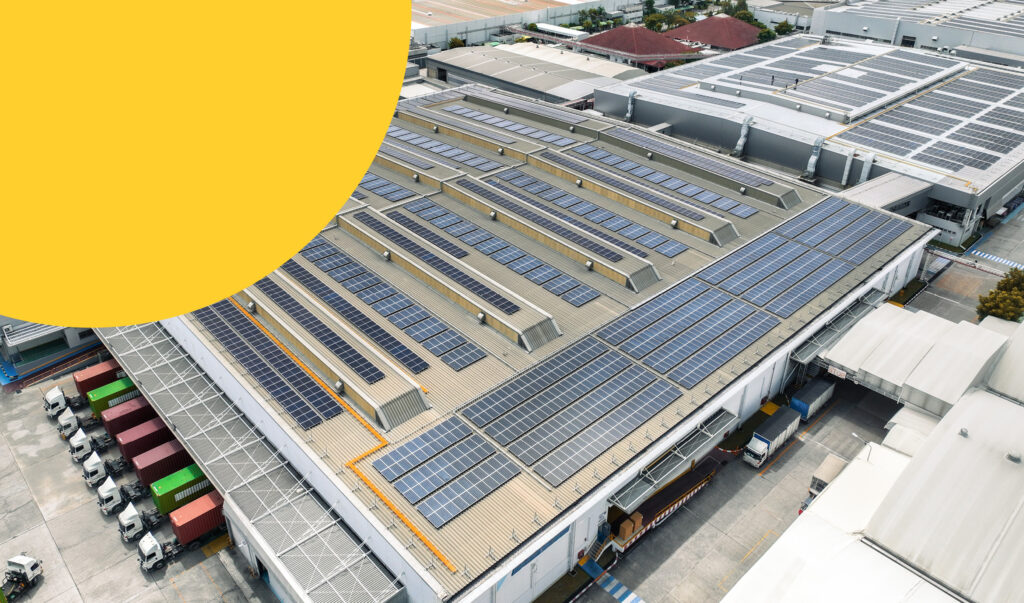Sustainability in the Retail Supply Chain: Taking Practical Action
Consumer awareness of the environmental, economic, and social impacts of products and companies has become increasingly important. This guide explores how retailers can take meaningful action to improve sustainability across their supply chains.
The retail industry’s carbon footprint
The retail industry plays a crucial role in both the global economy and environmental ecosystem. With worldwide sales projected to exceed $37.9 trillion by 2030, understanding the industry’s environmental impact is essential.
Retail accounts for approximately 25% of global greenhouse gas emissions, with the vast majority originating from the supply chain.
Where emissions occur
- 98% of retail’s carbon footprint comes from its extended value chain (Scope 3)
- Only 2% of emissions are directly controlled by retailers (Scope 1 & 2)
Breaking this down further:
- 65% from products and services purchased by retailers
- 20% from store operations and company vehicles
- 10% from store electricity and heating
- 4% from shipping products
- 1% from end-of-life product disposal
The regulatory landscape for sustainability is evolving, with directives like the Corporate Sustainability Reporting Directive (CSRD) mandating comprehensive tracking and reporting of environmental impacts.
It’s worth noting that the implementation dates for CSRD and Corporate Sustainability Due Diligence Directive (CSDDD) have been moved back and they no longer apply to as many companies as initially proposed. While regulations are subject to review and delay, the importance and value of sustainability management and reporting remains critical. Regardless of shifting timelines, consumer and investor expectations continue to drive the need for robust sustainability practices.
The risks of non-compliance include regulatory fines, reputational impact, loss of market share, and failure to meet stakeholder expectations. Regulations like CSRD and extended producer responsibility (EPR) are particularly important for retailers due to their wide reach covering packaging waste, textiles, and food waste.
Why sustainability matters to retail
With 1.8 billion people joining the global consumer class by 2025, consumer expectations around sustainability continue to rise.
Gartner research found that sustainability metrics in investment plans will be standard practice for CFOs by 2026, with 30% of total debt capital markets funding directed towards ESG initiatives.
McKinsey & Company data further demonstrates the likelihood of consumers demanding even greater sustainability from brands, emphasising eco-friendly production, renewable energy use and closed-loop supply chains.
Transparency in sourcing, production and corporate practices has become a baseline expectation, with brands demonstrating ethical practices rewarded with consumer trust and preference.
Practical steps for retailers
1. Implement thorough due diligence
Environmental due diligence helps identify, manage and mitigate impacts associated with the retail industry. The Sedex platform enables retailers to:
- Engage with suppliers systematically
- Embed structured due diligence processes
- Gather data to identify organisational impacts and risks
- Inform target-setting decisions
- Monitor performance
- Assess risks
- Mitigate environmental impacts
2. Conduct life cycle assessments
Life cycle assessments evaluate the environmental impact at each stage of a product’s existence, providing essential data for decision-making. This practical approach helps retailers understand their full environmental footprint beyond their direct operations.

Environment doesn’t have any stand-alone carbon labelling, aside from broad key elements that exist for data analysis and target setting, like Scope. Metrics actively help set targets. Sedex supports data collection through ESGeo to inform target setting and performance tracking.
Benefits of life cycle assessment include:
- Identifying high-impact areas for improvement
- Reducing greenwashing risk by verifying sustainability claims
- Enabling responsible sourcing decisions
- Enhancing consumer engagement
- Optimising logistics and distribution
- Improving end-of-life management
3. Collaborate with suppliers
There is a general lack of ESG maturity in supply chains – which is one of the main reasons why more than 300 companies have been dropped from Science Based Targets initiative (SBTi).
Effective collaboration includes:
- Setting clear expectations when engaging with your suppliers, offering tangible, realistic examples of what you expect
- Providing necessary support and resources
- Building better relationships that create robust, resilient supply chains
- Breaking down silos between different entities
It’s always best to focus on the first point, be clear about your expectations, and why it’s important for them to engage with you.
4. Focus on ethical sourcing and green packaging
With demand for post-consumer recycled plastic packaging expected to increase threefold by 2030 (while supply may only double), according to McKinsey analysis, retailers must prioritize sustainable packaging.
Extended Producer Responsibility regulations and the Packaging and Packaging Waste Regulation have introduced mandatory recycled content targets:
- 2030: 10–35% (depending on material type)
- 2040: 25–65%
To create a more sustainable packaging strategy:
- Assess and optimise your full packaging portfolio
- Integrate sustainability principles into design processes
- Establish new value chain partnerships
- Build internal capabilities
5. Embrace circular economy principles
Beyond recycling, retailers should explore:
- Implementing product recapture programs
- Developing zero-waste manufacturing
- Designing products for disassembly and recycling
- Investing in R&D for eco-friendly materials
- Reducing reliance on traditional plastics
The advantages of embracing the circular economy include cost savings, meeting consumer demand, and environmental benefits.
6. Reduce fuel consumption
The transportation of goods represents a significant environmental impact. By optimising logistics and transportation, retailers can:
- Reduce operating costs through more efficient routing
- Decrease carbon emissions by implementing electric or hybrid delivery fleets
- Improve customer satisfaction with more reliable delivery timeframes
- Meet regulatory requirements for emissions reduction
- Enhance brand reputation through visible sustainability commitments
Practical approaches include:
- Electrification of logistics
- Driver education for efficiency
- Pre-planning transportation to reduce waste
- Optimising delivery routes and methods
7. Set ambitious, achievable targets
Once you understand your impacts, set targets that are:
- Focused on priority areas
- Specific and measurable
- Verifiable and transparent
- Regularly reported against
- Aligned with your overall business strategy
Targets are vital – they provide accountability and a clear path for progress while demonstrating your commitment to stakeholders.
8. Own your impacts through transparency
Retailers need to be transparent about their supply chain to maintain stakeholder trust. This means:

- Regular public reporting on progress
- Acknowledging challenges alongside successes
- Demonstrating commitment to continuous improvement
- Providing confidence that you’re taking commitments seriously
The business benefits of sustainability
Sustainable initiatives deliver tangible business value:
- Enhanced brand reputation: According to Nielsen, 81% of global consumers feel strongly that companies should help improve the environment
- Improved customer loyalty and trust: Accenture research shows that 62% of consumers want companies to take a stand on sustainability
- Greater operational efficiency: Companies with strong sustainability practices have operational profits higher by up to 60% than their competitors
- Reduced regulatory risk: Proactive sustainability measures help avoid costly compliance issues
- Competitive advantage in the marketplace: Harvard Business Review reports that companies with strong sustainability programs outperform their peers financially
Whether minimising waste, rethinking supplier relationships, or reimagining business models, creating a sustainable supply chain sets retailers apart from competitors.
Sedex offers comprehensive tools to help retailers map, identify, assess and mitigate social and environmental risk throughout their supply chain, enabling businesses to meet the growing expectations of consumers, investors, and regulators alike.
Need support in achieving your sustainability goals? Contact Sedex today to discover how our platform can help you navigate the challenges of creating a more sustainable retail supply chain.



